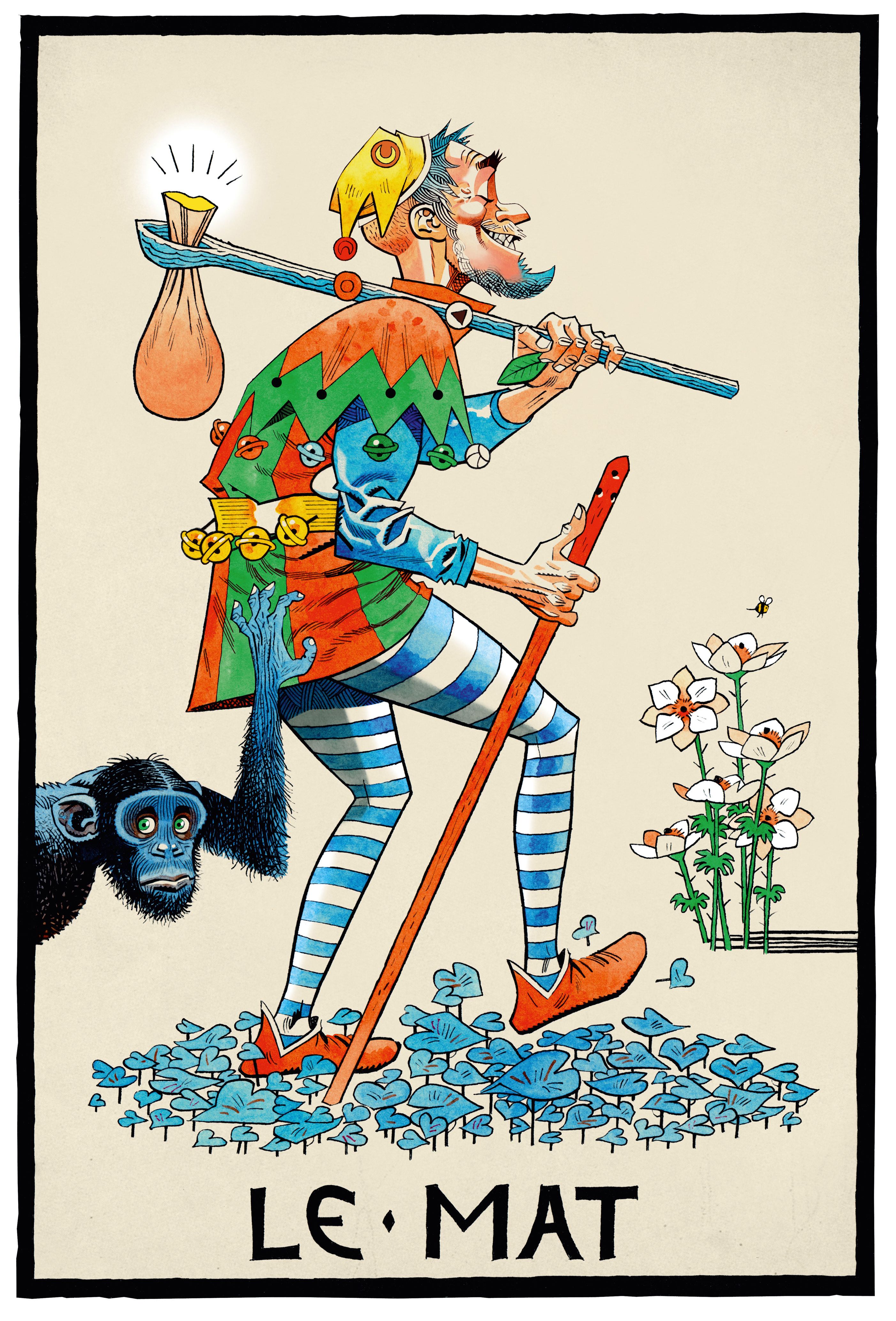Exploring the weird, wonderful worlds of Jamie Hewlett
- Text by Biju Belinky
- Illustrations by Jamie Hewlett

It doesn’t matter where you come from or how you first saw it – anyone can recognise Jamie Hewlett’s work from a distance. Juxtaposing hyper-detailed scenes with hollow-eyed, intricately dressed characters, the artist’s brain contains a multitude of universes that defy classification, teetering the line between comic books, fine art and performance.
Although Hewlett’s legacy has been widespread, be it via Gorillaz records, Saatchi exhibitions or Tank Girl comics, it has never been comprehensively catalogued – until now. Jamie Hewlett, published by Taschen, contains 25 years of the artists’ work, containing everything from finalised pieces, to drafts and projects that never saw the light of day.


The book opens with a candid conversation between Hewlett, the renowned French photographer Jean-Baptiste Mondino and the actress Emma de Caunes, who also happens to be Hewlett’s wife. They discuss longevity, big and small dicks, punk rockers, DC comics, and MAD Magazine.
The casual approach to the conversation is fitting with the rest of the book – it’s haphazard, not overly precious or hyper-complex, but filled with happiness and detail. Halfway through, talking about his characters, Hewlett says: “I like misfits. I like ugly people who are interesting. Ugly-looking people who dress well are more interesting to me.”
And it shows. The women he creates steer away from the hyper-femininity and traditional – instead, they exist in their own right. They are not solely decorative. Tank Girl, for example, was born in the creative unconscious of Jamie and Alan Martin during the Thatcher years, and came into the art world like a punch in the face. Gleefully bruised and battered, she drank, fucked, and ran through the Australian desert with her kangaroo boyfriend, Booga. The pages transported the reader into the mind of tank girl, who became an icon for misfit women all over the world.

The book goes on to explore his other successful projects from the past 25 years. There’s Gorillaz, the only entirely manufactured band during the age of fake-reality popstars; heartfelt documentations like the Bangladesh series; and his latest projects, like giant tarot cards The Suggestionists, shown at the Saatchi in late 2015.
Ultimately what is incredible about Hewlett’s work is that it continuously defies definition and continues to expand itself without losing character. It’s clearly identifiable even when it changes medium. It borrows from all aesthetics and DIY cultures and creates something brand new – a dirty, gritty world of wires, cock shuttle ships, giant eyes and red-eyed beasts that a lot of us would love to live in.

 Jamie Hewlett is out now, both living his life and in book form, via Taschen.
Jamie Hewlett is out now, both living his life and in book form, via Taschen.
Enjoyed this article? Like Huck on Facebook or follow us on Twitter.
Latest on Huck

Clubbing is good for your health, according to neuroscientists
We Become One — A new documentary explores the positive effects that dance music and shared musical experiences can have on the human brain.
Written by: Zahra Onsori

In England’s rural north, skateboarding is femme
Zine scene — A new project from visual artist Juliet Klottrup, ‘Skate Like a Lass’, spotlights the FLINTA+ collectives who are redefining what it means to be a skater.
Written by: Zahra Onsori

Donald Trump says that “everything is computer” – does he have a point?
Huck’s March dispatch — As AI creeps increasingly into our daily lives and our attention spans are lost to social media content, newsletter columnist Emma Garland unpicks the US President’s eyebrow-raising turn of phrase at a White House car show.
Written by: Emma Garland

How the ’70s radicalised the landscape of photography
The ’70s Lens — Half a century ago, visionary photographers including Nan Goldin, Joel Meyerowitz and Larry Sultan pushed the envelope of what was possible in image-making, blurring the boundaries between high and low art. A new exhibition revisits the era.
Written by: Miss Rosen

The inner-city riding club serving Newcastle’s youth
Stepney Western — Harry Lawson’s new experimental documentary sets up a Western film in the English North East, by focusing on a stables that also functions as a charity for disadvantaged young people.
Written by: Isaac Muk

The British intimacy of ‘the afters’
Not Going Home — In 1998, photographer Mischa Haller travelled to nightclubs just as their doors were shutting and dancers streamed out onto the streets, capturing the country’s partying youth in the early morning haze.
Written by: Ella Glossop